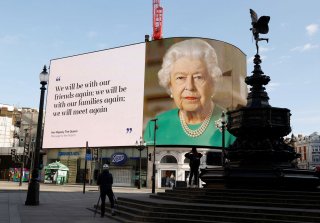How Should Governments Send out Public Health Messages?
There is lots of research into the way brands communicate that suggests some tones work better than others when it comes to getting your message across.
While lockdown measures are being lifted in some parts of the world, the situation for millions remains the same: stuck at home due to social distancing, worried and looking to their government for news about when life may return to normal.
The way national leaders and governments are choosing to communicate complex and unsettling public health information about COVID-19 to their citizens has never been more important. There are plenty of examples of what happens when leaders don’t get the content, tone and message quite right: confusion and fear among already confused and fearful populations.
In Italy, the government has emphasised its concern for the wellbeing of the nation, and reports suggest that many citizens have felt calmed and reassured by this. The US government’s tone is more assertive, with President Donald Trump “declaring war on the virus”.
Meanwhile UK messaging has been mixed. For example, the Queen’s national address on April 5 was perceived by many as reassuring and caring, whereas the prime minister, Boris Johnson has been more combative. Like Trump, he has also referred to the pandemic as a war.
But it doesn’t have to be like this. There is lots of research into the way brands communicate that suggests some tones work better than others when it comes to getting your message across. Governments can learn a great deal from these brands when it comes to delivering important public health messages – particularly when the information is complex and the methods used to keep everyone safe are unappealing.
Fighting talk can have a very different effect to offering a metaphorical arm around the nation’s shoulder. Plus, people respond to information differently depending on the time and circumstances of its delivery. This partly reflects how people are feeling, which must also be taken into account.
Coping mechanisms
The growing pool of research into the psychological impact of COVID-19 on mental wellbeing indicates that many are concerned and frustrated at best, fearful and lonely at worst. One study in China found the coronavirus led to heightened anxiety, depression, and indignation, as well as sensitivity to social risks.
Being isolated at home for weeks on end has left many feeling what psychologists call socially excluded. Research shows this can affect people in different ways. It can damage your caring instincts and make you less empathetic. It can also increase your need for emotional connection to help you cope.
There is also research that shows people who feel socially excluded prefer brands that convey human-like features. So for example with candy, they were drawn to M&M chocolates over Skittles because of the human-like M&M characters.
For a piece of forthcoming research, my colleagues J. Jeffrey Inman, Gülen Sarial-Abi and I have analysed how companies in Italy and the US are communicating with customers in lockdown and how they have responded. Over the course of March 10 to March 30, we found that companies used three overarching themes in their communications: togetherness, caring and fighting talk. In both Italy and the US, consumers were consistently more receptive to and said they preferred the brands using caring messaging.
For example, with skin care products, people reacted more positively to phrases that emphasised how it was nourishing and gentle on their skin compared to those that used words like “invigorating”, “warrior”, “potent” and “tough”. When we tested the same phrasing before the coronavirus, there was no difference in people’s reactions so we have reason to believe that it’s the feeling of social exclusion that draws people to the more caring messaging.
These are preliminary results, but they have implications for public health communication as governments around the world seek to plot a course out of lockdown in an orderly, safe way.
The Italian government’s more caring, supportive tone when communicating with its citizens during these difficult times seems best for the millions of people struggling with feelings of exclusion or loneliness. In contrast, Trump’s bombastic rhetoric may well risk alienating citizens already struggling with feelings of social exclusion.
Our findings suggest that the communication tone that is more helpful and provides more psychological relief to people experiencing social exclusion due to COVID-19 is a caring one, while making sure to boost self-esteem. In line with this, the British government could take a few lessons from the Queen by using a compassionate tone. As well as clear public health guidance, governments should emphasise their belief in the public’s ability to handle difficult situations.
![]()
Aulona Ulqinaku, Lecturer in Marketing, University of Leeds
This article is republished from The Conversation under a Creative Commons license. Read the original article.
Image: Reuters

